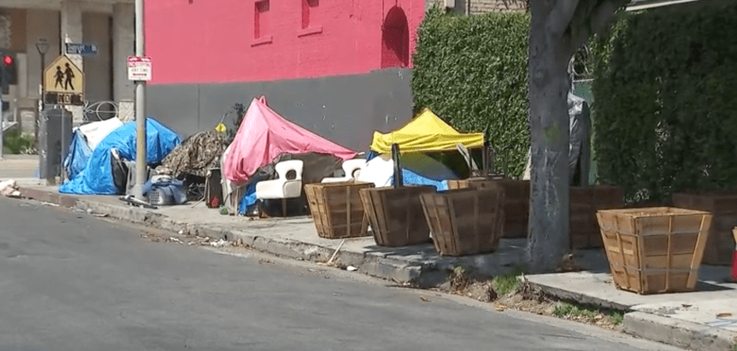Hollywood Recording Studio Owner Puts Planters Used to Deter Homeless Encampment Back Up Hours After Removal by City

In a recent conflict between private property rights and public space management, a Hollywood recording studio owner has reinstated planters used to deter homeless encampments just hours after they were removed by city officials. This incident underscores the ongoing tensions and complex challenges surrounding homelessness in urban areas.
Background
The studio owner initially installed large planters outside his business to prevent homeless individuals from setting up encampments on the adjacent sidewalk. These planters were part of a broader trend among some business owners to use physical barriers as a deterrent against encampments near their properties.
City’s Removal of Planters
City officials removed the planters, citing regulations against obstructing public sidewalks and concerns about accessibility. The removal was part of the city’s efforts to manage public spaces more equitably and address the needs of the homeless population without resorting to punitive measures.
Owner’s Response
Within hours of the city’s removal action, the recording studio owner put the planters back in place. He argued that the planters were necessary to maintain the safety and cleanliness of his property and to ensure a welcoming environment for his clients.

Implications for Local Businesses and Residents
Business Concerns
- Safety and Cleanliness: Business owners, including the studio owner, often cite safety and cleanliness as primary reasons for using such deterrents. They claim that homeless encampments can lead to unsanitary conditions, increased crime, and a decline in customer foot traffic.
- Property Value: Maintaining property values and ensuring a positive business environment are significant concerns for local business owners.
Resident Concerns
- Public Space Access: Residents and advocates argue that the use of planters and other physical barriers limits public access to sidewalks and can make it more difficult for homeless individuals to find safe places to stay.
- Humanitarian Perspective: There is a growing call for more compassionate and effective solutions to homelessness that do not involve displacing individuals through physical deterrents.
City’s Perspective
The city aims to balance the needs of business owners with those of the homeless population. Officials emphasize the importance of adhering to regulations that ensure public spaces remain accessible to everyone, including those experiencing homelessness.
Broader Implications
Homelessness Crisis
The incident highlights the broader homelessness crisis in Los Angeles and other major cities. The use of physical barriers by business owners is seen as a symptom of deeper systemic issues that require comprehensive solutions.
Legal and Ethical Considerations
- Regulatory Compliance: Business owners must navigate complex regulations regarding the use of public spaces and compliance with city ordinances.
- Ethical Questions: The ethical implications of using physical barriers to deter homelessness raise important questions about how society addresses the needs of its most vulnerable members.
Potential Solutions
Enhanced Support Services
Increasing support services for the homeless, including shelters, mental health services, and job training programs, can address the root causes of homelessness and reduce the need for deterrent measures.
Community Engagement
Engaging local communities in dialogue and collaborative efforts to find compassionate and practical solutions can help balance the needs of all stakeholders.
Policy and Advocacy
Advocating for policies that provide long-term solutions, such as affordable housing initiatives and comprehensive social services, is crucial in addressing the homelessness crisis effectively.
The actions of the Hollywood recording studio owner reflect the ongoing challenges and conflicts in managing public spaces and addressing homelessness. Finding a balanced and humane approach requires cooperation between business owners, residents, city officials, and advocacy groups. Comprehensive and compassionate solutions are needed to tackle the underlying issues of homelessness and create a more inclusive urban environment.





